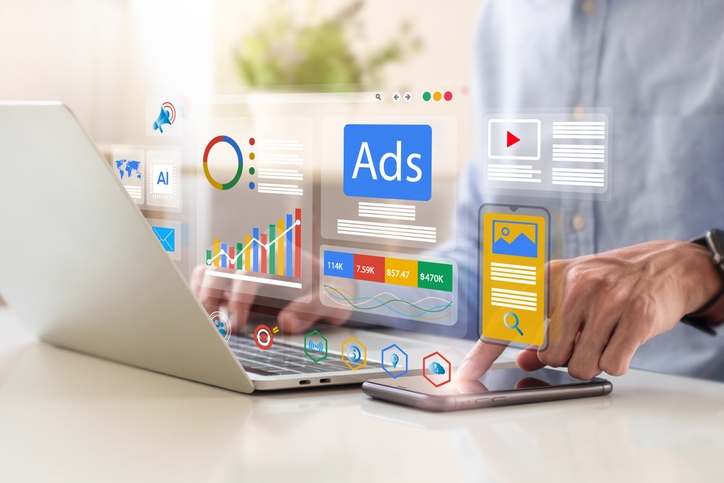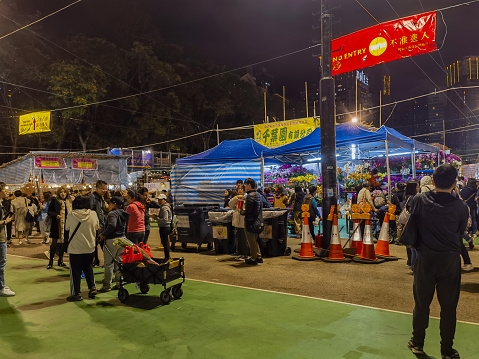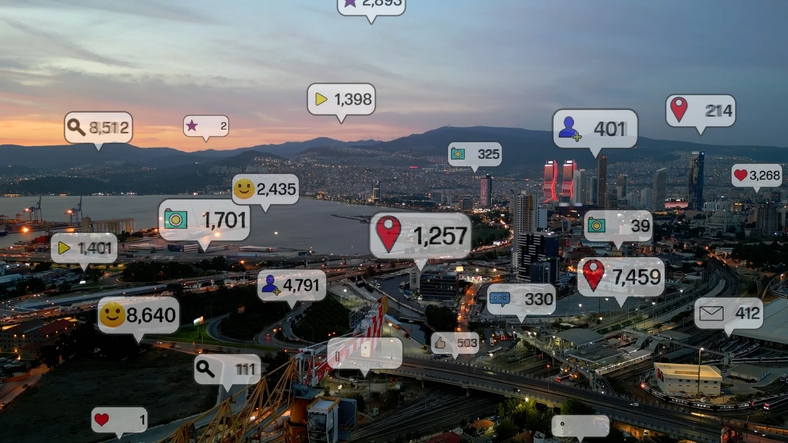Strategies for Building a full proof Trade Show Marketing Plan: Pre, During & Post Event
Create a successful trade show marketing plan with essential steps to guide your preparation. Read the article for expert tips and actionable insights.

Trade shows are one of the most powerful platforms for generating leads, showcasing your product’s features, and making meaningful connections with potential customers. But success doesn't come by simply showing up. It’s the result of a carefully crafted marketing plan that spans out to pre-event, during, and post-event phases. If you are new to this then you must first go through end to end trade show guide.
This blog will guide you through building a campaign that creates a lasting impression and drives real ROI.
What Makes a Full Trade Show Marketing Plan Important
Most companies treat trade shows as a one-time event. But the most successful trade show campaigns view them as a multi-stage process—starting weeks before the event and continuing long after the booth is packed up.
A complete plan enables you to:
- Generate buzz before the event
- Engage attendees on the show floor
- Nurture leads with a structured follow-up strategy
With smart trade show planning, your team can stay aligned, maximize efficiency, and ensure every dollar you invest turns into a valuable opportunity.
Tip: Use a trade show planning software to coordinate timelines, roles, and messaging across all three phases.
Pre-Event Marketing Campaigns
→ Build Anticipation and Book Meetings Before the Doors Open
The success of your trade show starts well before the doors open. An effective pre-show marketing campaign does more than generate awareness—it sets the tone for meaningful engagements, booked meetings, and qualified leads. In this stage of building a trade show marketing plan pre, the goal is to create buzz, connect with your target audience, and drive pre-show interest using multichannel touchpoints.
Set the Foundation with a Clear Strategy
To avoid last-minute chaos and misaligned efforts, it's crucial to plan ahead and define your campaign structure early. A strong trade show checklist ensures your sales and marketing teams are working toward shared goals.
- Define your target audience using CRM data, past attendee lists from event planning trade shows, or previous event analytics to pinpoint decision-makers and top accounts.
- Build a centralized trade show planning template (or use tools like Azavista’s trade show planning software) to align your messaging, audience segments, responsibilities, and campaign goals.
- Clarify your sales strategy by identifying VIPs, potential attendees, and accounts that represent the best lead generation opportunities. Focus on prospects with known pain points that your solution addresses.
Create Buzz with Multi-Channel Promotion
Marketing success in this stage relies on well-coordinated outreach across email, social media, and partner channels. These effective strategies help you reach prospects in the same way they consume content every day.
- Launch an email campaign that teases exclusive booth demos, new product reveals, or exclusive discounts—and use countdowns to build anticipation.
- Post teaser videos, behind-the-scenes booth setup content, and exclusive insights on your social media platforms to get people excited about visiting your booth at the next trade show.
- Embed CTAs in marketing materials, email signatures, and landing pages to guide traffic toward early registration or meeting requests.
- Leverage event-specific hashtags across your social channels to enhance engagement, expand visibility, and connect with those already interested in the event.
- Tease interactive elements like live sessions, contests, or AR/VR demos to give attendees something to look forward to and increase your booth footfall.

Encourage Early Engagement
The best way to ensure a strong start on the show floor is to engage high-potential leads before the event even begins. When you offer real value upfront, you draw in serious buyers and prospects looking for valuable content.
- Offer gated content like whitepapers, industry expert insights, or ebooks in exchange for pre-show signups—ideal for building a list of valuable leads.
- Use QR codes and dynamic landing pages to quickly capture data from those interested in scheduling time with your team.
- Set up meeting slots with potential attendees who express interest early—this ensures your team is fully booked with high-value conversations from Day 1.
Pro Tip: Use trade show planning software to streamline your pre-event efforts. From automated personalized emails to registration tracking and lead nurturing workflows, the right tool helps you stay organized, efficient, and impactful during this critical campaign phase.
Marketing During the Trade Show
→ Create an Engaging Booth Experience That Delivers Value
When the trade show doors open, your booth becomes your brand’s stage. This is your moment to encourage attendees, showcase your product or service, and spark one-on-one conversations that turn curiosity into qualified leads. Whether you’re participating in in person events or hybrid setups, this is where all your pre trade show preparation comes to life.
Design for Impact
A strategically designed booth can make or break your lead generation efforts. Your booth should not only be beautiful but also functional—guiding traffic, enabling discovery, and fostering connections.
- Create a visually appealing booth layout with dedicated spaces for live product demos, casual conversations, and fun activities like contests or giveaways.
- Use a trade show floor plan or even refer to a champs trade show floor plan to secure the best booth location that maximizes visibility and flow.
- Integrate interactive displays, gamified experiences, or virtual reality experiences that grab attention and keep trade show attendees engaged longer.
- Add branded visuals and signage to reinforce brand visibility and leave a lasting impression.
Train Your Sales Team for Lead Generation
Even the best booth can fall flat without the right people. Your sales team must be prepared not only to speak confidently about your offering but also to engage, listen, and qualify on the spot.
- Train your team with key talking points, product’s features, objection handling techniques, and clear role assignments for every booth zone.
- Equip team members with lead capture tools such as tablets or badge scanners to ensure no opportunity slips through the cracks.
- Coach them to actively listen to visitors and identify specific pain points—this insight is gold for later follow-ups.
- Encourage real-time note-taking or survey responses to support personalized post event follow-up and tailored email outreach.
Marketing requires a human touch—ensure your team blends professionalism with authenticity to connect deeply with potential customers.
Drive Brand Awareness and Lead Capture
An exciting booth isn’t just about foot traffic—it’s about driving sales and creating memorable brand experiences. Make it easy for people to remember you, and even easier for them to connect.
- Offer special promotions, event-exclusive bundles, or branded swag to encourage attendees to stop by and start a conversation.
- Use high-impact presentation slides, short product demos, or Q&A sessions to showcase your solution's value.
- Deploy roving team members throughout the exhibit hall for direct engagement with passersby who may not initially stop at your booth.
- Use visuals and content to build excitement, position your company as an innovator, and reinforce your brand promise to new customers and repeat clients alike.

Post-Event Marketing Campaigns
→ Turn Trade Show Conversations into Lasting Relationships
The event may be over, but your opportunity to make an impact is just beginning. Post-event engagement is where the real conversion happens. This is your chance to nurture the leads you captured, build trust, and turn interest into real business. A well-crafted post-show strategy ensures your trade show marketing efforts don’t lose momentum.
Start with a Personalized Follow-Up Strategy
Not every attendee is ready to buy right away. Some need a nudge, others need more information—and nearly all of them need a reminder of why they stopped at your booth in the first place. Personalized follow-up emails can help you reestablish the connection and keep your brand top-of-mind.
- Segment your leads by interest level, industry, or solution fit based on the notes and survey responses gathered during the event.
- Send tailored emails that reference their pain points or questions, and offer relevant next steps like demos, consultations, or free trials.
- Combine email campaigns with strategic phone calls to hot leads for a more direct and meaningful conversation.
- Include relevant content like case studies, product guides, or upcoming webinar invites to deliver ongoing value.
Tools like Azavista’s trade show planning software can help automate lead scoring and streamline your follow-up efforts across channels.
Collect Feedback and Track Performance
To improve your strategy for the next trade show, you need to know what worked and what didn’t. Gathering insights from attendees, staff, stakeholders and analyzing the data helps you fine-tune your future trade show planning process.
- Send out post event surveys to understand how attendees experienced your booth, messaging, and brand.
- Review lead quality and ROI by campaign type to see which tactics delivered the most qualified leads.
- Hold a team debrief to discuss what could be improved—from booth layout to talking points to onsite logistics.
Build a Community Beyond the Booth
Trade shows are also about community building—connecting with like-minded professionals, potential partners, and your wider industry audience. Continue those relationships long after the exhibit hall closes.
- Invite attendees to join your community (e.g., private LinkedIn groups, customer forums, or Slack spaces).
- Share relevant content on social channels that aligns with what your leads care about.
- Keep your company top-of-mind by sending regular newsletters, exclusive offers, or event invites.
With the right post event engagement strategy, your booth doesn’t disappear—it evolves into a long-term relationship and a thriving pipeline of valuable leads.

Final Thoughts: Your Trade Show Marketing Checklist
Here’s a quick trade show planning checklist to get you started:
- Define audience and goals
- Build a pre-event promotion strategy
- Finalize booth design and interactive elements
- Train your team on messaging and lead capture
- Execute during the event with full team focus
- Segment leads and begin post event follow-up
- Track performance and plan for the next event
By investing in a full-funnel marketing plan, you transform trade show participation from a branding expense into a sales-driving engine. Start planning early, align your team focused strategy, and never underestimate the power of well-timed follow up emails and personalized emails.
Ready to simplify your trade show strategy? Discover how Azavista’s trade show planning software helps you streamline everything from pre-trade planning to post event analysis—all in one place.
More Event Marketing and Promotion












